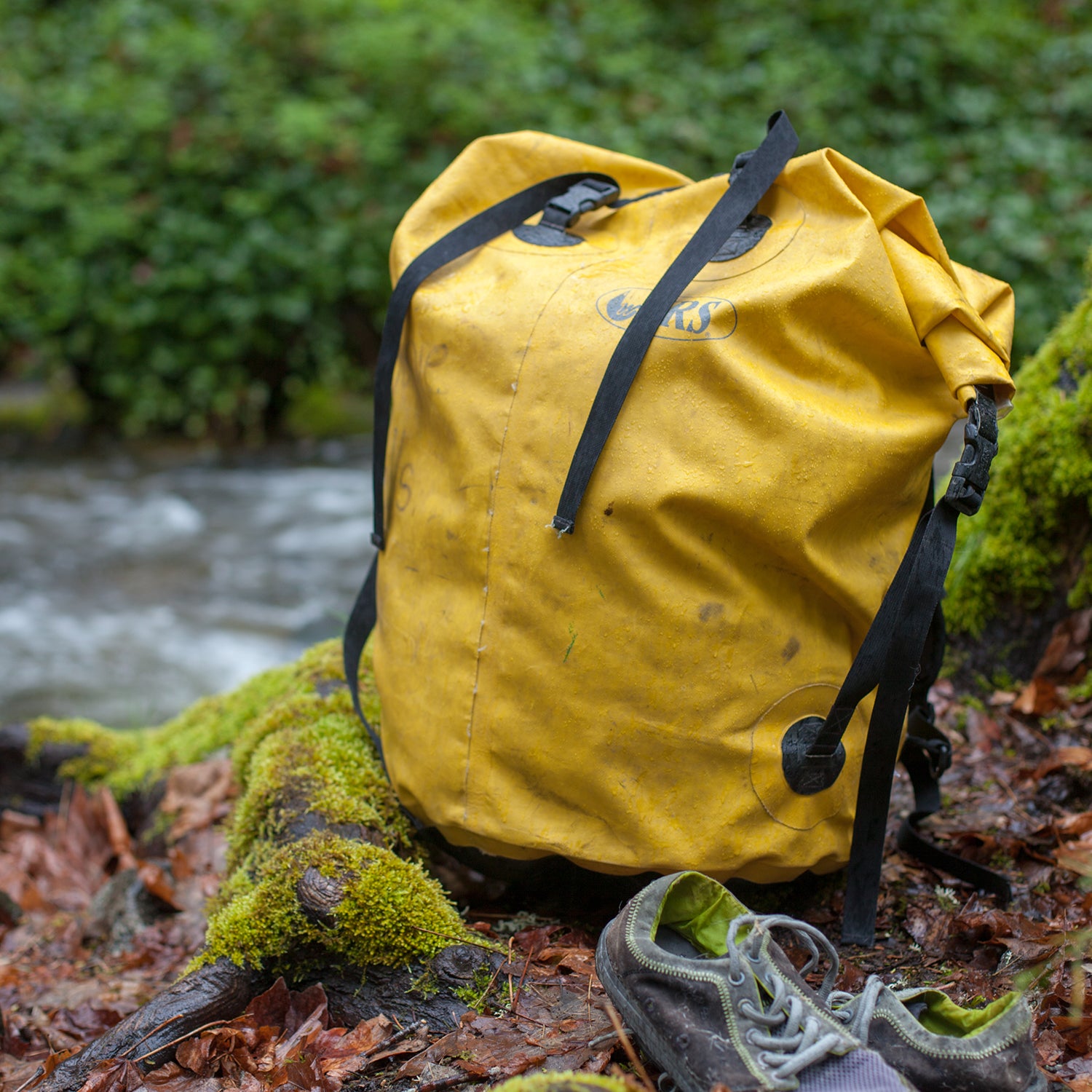A couple years after starting NRS in his garage in 1972, Bill Parks started building the first versions of the company’s now-ubiquitous Bill’s drybag. At the time, river runners were using military surplus bags from World War II to keep their gear dry on multiday raft trips. While those things worked well for a time, they were no longer being made; after 1974, they became very difficult to find as supplies dwindled. So, in the early ’70s, Parks bought a truck tarp and hired an outfit in Seattle to weld it into a large rolltop tube with backpack straps. That prototype became the first ($150), which Parks brought to market in his hand-typed catalog in 1977.
As the first purpose-built drybag for boaters, the design proved timeless. In 2008, on a four-day trip on the Northern Forest Canoe Trail, I used the 110-liter bag to house all my gear and was immediately smitten with its no-nonsense design. Over the decade since, I have used the bag as an all-purpose gear hauler, and it has kept its contents bone dry for hundreds, possibly thousands, of miles on the water. I have a pile of other drybags, but the Bill’s is always what I reach for first. It’s the kind of gear that feels more like an old friend than a piece of equipment. It’s held everything from my brutally stinky rafting clothes to the engagement ring I brought on a river trip when I almost asked my now-wife to marry me (long story).
The bag’s strength, as is the case with most timeless gear, is in its simple dependability. The straightforward rolltop is less likely to break than a fancy waterproof zipper. The PVC-treated exterior is sturdy and waterproof, so I don’t question whether my gear will get soaked if it goes into the drink. Multiple lash points for securing the bag to a raft add to that peace of mind. It also has tons of space—110 liters. The backpack straps are key for long portages and transporting the bag down sketchy put-ins.
In 2009, during the worst weekend of guiding in my life, I flipped my raft twice and wrapped it around a rock on an Illinois river trip. While the relationship with my girlfriend at the time didn’t survive the trauma, I only fell further in love with my Bill’s Bag: The contents emerged from the ordeal relatively unscathed. Sure, my fleece and sleeping bag were damp when I got into camp both nights, but it was nothing a little time drying by the fire couldn’t fix.
This bag should be the top choice if you’re looking for something to keep your gear dry with a product that’s straightforward, solid, and well priced.


